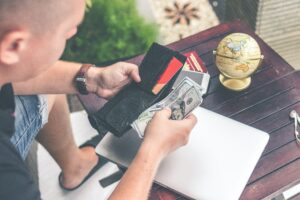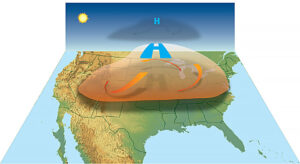A recent post on social media illustrates the dangers of buying cheap, non-certified, and counterfeit Chinese electronics. The post included a photograph showing a battery pack used to charge mobile devices that was plugged in while being charged and had burst into flames.
While it is tempting to buy cheap devices such as cellphone chargers, laptop batteries, battery packs to charge and run mobile devices, and charging cables, from eBay, Amazon, or other online retailers, there is an inherent risk involved.
The reason many of the power-related devices cost more from a reputable source is the testing and safety requirements of the products. The problem is not so much the “White-Label” Chinese manufacturing facilities but the importer who wants a product made cheaply to sell cheaply, usually by allowing or instructing the manufacturer to cut corners in the design and manufacturing process. (“White-Label” refers to manufacturers who will custom-build a product and put a customer’s brand on it.)
There have been laptops that have literally exploded, and the same for cellphones. Last year, hoverboards were catching fire during charging. Since these are 36-volt batteries, they produce a lot of energy and make quite a conflagration.
Although there have been a few recalls from major manufacturers such as HP and Samsung, most of the safety risks do not come from OEM (original equipment manufacturer) products, but the cheap off-brands that sell for much less than the OEM device, especially online.
This is where the UL label comes in. UL stands for Underwriters Laboratories. Underwriters Laboratories (UL) is the largest and most well known, not-for-profit testing laboratory in the world. They independently test product safety and provide certification. Last year, 14 billion products with the UL mark entered the global marketplace.
The letters CE on a device means that it has met Europen Union standards. CE stands “Conformite Europeene,” which is French for “European conformity.” The CE certification is generally not recognized in the U.S., because certain products do not have to go through third-party testing.
There is also the problem of counterfeit UL seals. Recently, the U.S. Customs Service seized 2,000,000 products from China bearing counterfeit UL seals of approval. These light strings, fans, extension cords, lamp lamps, chargers, batteries, and power supplies often didn’t pass UL’s safety standards.
To combat counterfeiting, UL began requiring certain Chinese-made products to bear a holographic seal that is much more difficult to replicate. UL has also established a toll-free hotline (877-854-3577) consumers can call to access a database to verify that a product has really received UL approval.
Always look for the seal on the product itself, not just on the packaging, make sure the letters “UL” are in a circle, and look for the trademark symbol in the circle.
There are a few things one can do to mitigate the fire danger from even reputable products. Do not charge your device while in your pocket, on your lap, or on a bed. Do not keep your device plugged in all the time. Once it is charged, remove it from the charger. Finally, you should check your charger, battery pack, etc, to see if it feels excessively warm. If it is too warm to comfortably touch it, remove it from the power source immediately.










